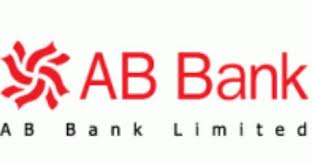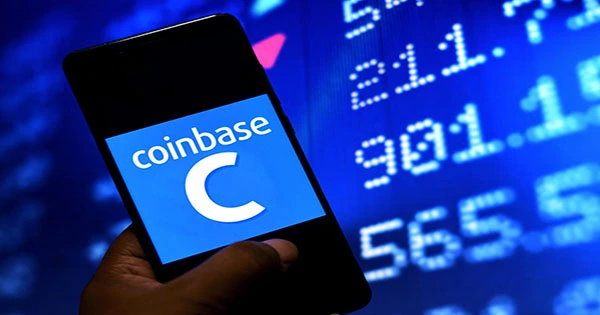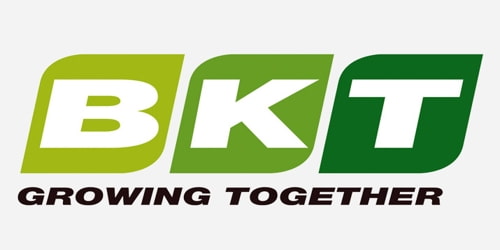Working Experiences at AB Bank Limited
AB Bank Limited, the first private sector bank under Joint Venture with Dubai Bank Limited, UAE incorporated in Bangladesh on 31st December 1981 and started its operation with effect from April 12, 1982.
Dubai Bank Limited (name subsequently changed to Union Bank of the Middleast Limited) decided to off-load their investment in AB Bank Limited with a view to concentrate their activities in the UAE in early part of 1987 and in terms of Articles 23A and 23B of the Articles of Association of the Company and with the necessary approval of the relevant authorities, the shares held by them in the Bank were sold and transferred to Group “A” Shareholders, i.e. Bangladeshi Sponsor Shareholders.
As of December 31, 2006; the Authorized Capital and the Equity (Paid up Capital and Reserve) of the Bank are BDT 2000 million and BDT 2582.76 million respectively. The Sponsor Shareholders hold 50% of the Share Capital, the General Public Shareholders hold 49.43% and the rest 0.57% Shares are held by the Government of the People’s Republic of Bangladesh.
However, no individual sponsor share holder of AB Bank holds more than 10% of its total shares. Since beginning, the bank acquired confidence and trust of the public and business houses by rendering high quality services in different areas of banking operations, professional competence and employment of the state of art technology.
During the last 26 years, AB Bank Limited has opened 70 Branches in different Business Centers of the country, one foreign Branch in Mumbai, India, two Representative Offices in London and Yangon, Myanmar respectively and also established a wholly owned Subsidiary Finance Company in Hong Kong in the name of AB International Finance Limited. To facilitate cross border trade and payment related services, the Bank has correspondent relationship with over 220 international banks of repute across 58 countries of the World. AB Bank Limited, the premier sector bank of the country is making headway with a mark of sustainable growth. The overall performance indicates mark of improvement with Deposit reaching BDT 42076.99 million, which is precisely 53.78% higher than the preceding year. On the Advance side, the Bank has been able to achieve 46.32% increase, thereby raising a total portfolio to BDT 31289.25 million, which places the Bank in the top tier of private sector commercial banks of the country.
On account of Foreign Trade, the Bank made a significant headway in respect of import, export and inflow of foreign exchange remittances from abroad.
Mission, Vision, Objectives and Strategies:
Mission Statement:
“To be the best performing bank in the country”
Vision Statement:
“To be the trendsetter for innovative banking with excellence & perfection”
Objectives of the Bank:
To exceed customer expectations through innovative financial products & services and establish a strong presence to recognize shareholders’ expectations and optimize their rewards through dedicated workforce.
Long term Objective:
Keeping ahead of other competitors in productivity and profitability.
Short term Objective:
To attain budgetary targets fixed in each area of business
Strategic and Financial Objectives:
In this report, the major area of commercial banking has been covered is Foreign Exchange Section which comprises of mainly following departments.
Strategic Objectives:
- A bigger market share
- Broader and more attractive services and products than rivals.
- Superior customer service
- Wider geographic coverage than rivals
Financial objectives:
- Growth in earnings
- Higher dividend
- A more diversified revenue base
Job description
FOREIGN TRADE AND REMITTANCE DIVISION
Foreign exchange means the exchange of currency in terms of goods from one country to another. This is the most well-known and well-organized business uniform in world business. Foreign exchange division includes the following departments:
- Foreign Trade Department and
- Foreign Remittance Department.
Foreign Trade Department:
Foreign Trade means exchange of foreign currency for the trade purpose between two countries. In other words, Foreign exchange deals foreign financial transactions related to trade or business.
Foreign Trade Department has two sections. They are
- Import Section and
- Export Section.
Before discussing the Import and Export section, some concepts related to foreign trade should be clarified.
Concepts:
Important concepts of foreign trade as per UCPDC 600 are discussed below:
Importer / Buyer/ Opener/ Applicant:
Applicant means the party on whose request the credit is issued.
Issuing/ opening bank:
Issuing bank means the bank that issues a credit at the request of an applicant or on its own behalf.
Exporter/ seller/ beneficiary:
Beneficiary means the party in whose favor a credit is issued.
Advising / notifying bank:
Advising bank means the bank that advises the credit at the request of the issuing bank.
Conforming bank:
Confirming bank means the bank that adds its confirmation to a credit upon the issuing bank’s authorization or request.
Conformation:
Confirmation means a definite undertaking of the confirming bank, in addition to that of issuing bank, to honor or negotiate a complying presentation.
Complying presentation:
Complying presentation means a presentation that is in accordance with with the terms and conditions of the credit, the applicable provisions of these rules and international standard banking practice.
Negotiating bank:
The bank that negotiates the bill (draft) of exporter drawn under the credit is known as negotiating bank. If the advising bank is also authorized to negotiate the bill (draft) drawn by the exporter he becomes the negotiating bank.
Reimbursing bank:
If the issuing bank does not maintain any account with a bank who will be negotiating documents under a L/C, then arrangement is made to reimburse the negotiating bank for the amount to be paid under credit from some other bank with which the issuing bank maintains his account. The latter bank is termed as reimbursing bank. An authority to debit his account is sent to the bank where he holds balance advising to honor claims placed by a negotiating bank.
Paying bank:
The bank who effects payment to the beneficiary (as named in the latter of credit) is known as paying bank/drawee ban
Letter of Credit:
Credit means any arrangement however named or described, whereby a bank (issuing bank) acting at the request and the instructions of a customer (the applicant) or of its own behalf.
(1). is to make payment to or to the order of a third party (beneficiary), or is to accept and pay bill of exchange (drafts) drawn by the beneficiary.
(2) Authorizes another bank to effect such payment, or to accept and pay such bill of exchange.
(3). Authorizes another bank to negotiate. Against stipulated documents, provided that the terms and conditions of the credit are complied with.
Undertakings:
Both the issuing bank and the confirming bank have taken some undertakings. They are-
Issuing Bank Undertaking:
(1) Provided that the stipulated documents are presented to the nominated bank or to the issuing bank and that they constitute a complying presentation, the issuing bank must honor if the credit is available by:
- Sight payment, deferred payment or acceptance with the issuing bank.
- Sight payment with a nominated bank and that nominated bank does not pay
- Deferred payment with a nominated bank and that nominated bank does not incur its deferred payment undertaking or, having incurred its deferred payment undertaking, does not pay at maturity.
- Acceptance with a nominated bank and that nominated bank does not accept a draft drawn on it, having accepted a draft drawn on it, does not pay on maturity.
- Negitiation with a nominated bank and that nominated bank does not negotiate.
(2) An issuing bank is irrevocably bound to honor as of the time it issues a credit.
(3) An issuing bank undertakes to reimburse a nominated bank tat has honored or negotiated acomplying presentation and forwarded the documents to the issuing bank. Reimbursement for the amount of a complying presentation under a credit available by acceptance or deferred payment is due at maturity, whether or not the nominated bank prepaid or purchased before maturity. An issuing bank’s undertaking is to reimburse a nominated bank is independent of the issuing bank’s undertaking to the beneficiary.
Confirming Bank Undertaking:
(1) Provided that the stipulated documents are presented to the confirming bank or to any other nominated bank and that they constitute a complying presentation, the confirming bank must :
- Honor if the credit is available by:
- Sight payment, deferred payment or acceptance with the confirming bank.
- Sight payment with a nominated bank and that nominated bank does not pay
- Deferred payment with a nominated bank and that nominated bank does not incur its deferred payment undertaking or, having incurred its deferred payment undertaking, does not pay at maturity.
- Acceptance with a nominated bank and that nominated bank does not accept a draft drawn on it, having accepted a draft drawn on it, does not pay on maturity.
- Negitiation with a nominated bank and that nominated bank does not negotiate.
- Negotiate, without recourse, if the credit is available by negotiation with the confirming bank.
- An confirming bank is irrevocably bound to honor or negotiate as of the time it adds its confirmation to the credit.
- An confirming bank undertakes to reimburse a nominated bank tat has honored or negotiated acomplying presentation and forwarded the documents to the confirming bank.
Reimbursement for the amount of a complying presentation under a credit available by acceptance or deferred payment is due at maturity, whether or not the nominated bank prepaid or purchased before maturity. An confirming bank’s undertaking is to reimburse a nominated bank is independent of the confirming bank’s undertaking to the beneficiary.
- If abank is authorized or requested by the issuing bank to confirm a credit but is not prepared to do so, it must inform the issuing bank without delay and may advise the credit without confirmation.
- Import Section:
Import Mechanism
To import, a person should be competent to be ‘Importer’. According to Import and Export Control Act, 1950, the Office of Chief Controller of Import and Export provides the Import Registration Certificate (IRC) to the importer. After obtaining this, person has to secure a Letter of Credit Authorization (LCA). And then a person becomes a qualified importer. He is the person who requests or instructs the opening bank to open an L/C. He is also called opener or applicant of the credit.
Things Are Done In Import Mechanism
In broader aspect the major responsibilities that are performed here are —
- L/C Issuing.
- L/C Amendment (if necessary)
- Lodgement.
- Retirement of documents.
- Import Financing.
L/C Issuing:
This is the first thing to be done for import. Already the definition of L/C is discussed. Now, the important types of L/C is discussed below:
Classification of L/C:
Generally L/C has two types. These are
- Clean letter of credit
- Documentary letter of credit
Documentary is two types
- Revocable credit
- Irrevocable credit
Revocable credit
A revocable letter of credit may be cancelled or modified after its date of issue, by the issuing bank.
Irrevocable credit
An irrevocable letter of credit includes a guarantee by the issuing bank that if all of the terms and conditions set forth in the letter are satisfied by the beneficiary, the letter of credit will be honored.
There are three types of L/C offered by Kakrail Branch, AB Bank. They are:
- Sight L/C
- Deffered / Usance L/C
- Back -to -Back L/C
Sight L/C: Payment must be made within five (5) working days after the documents has been received from the exporter.
Deffered / Usance L/C: Payment must be made on or after the due date i.e. shipment date or Bill of Lading date. Deffered L/C usually opened for 90 days.
Back -to -Back L/C: Usually, this L/C is opened by the exporter. If exporer needs to import goods or equipments to manufacture the ordered goods, then he may import those goods or equipments by opening a L/C against this mother L/C. The value of the back-to-back L/C can be 80 percent of the mother L/C.
Before issuing a L/C the buyer and the seller located in different countries, a “sales contract” providing for payment by documentary credit. As per requirement of the seller the buyer then instructs the bank – the issuing bank – to issue a credit in favor of the seller (beneficiary). Instruction/Application for issuing a credit should be made by the buyer (importer) in the issuing bank’s slandered form. The credit application, which contains the full details of the proposed credit, also serves as an agreement between the bank and the buyer. After being convinced about the necessary conditions contains in the application form and sufficient conditions to be fulfilled by the buyer for opening a credit, the opening bank then proceeds for opening the credit to be addressed to the beneficiary.
Check Lists for Issuance of Import L/C:
Usually, Kakrail Branch, AB Bank issues import L/C for both the regular and for new importers. For new importers, they send a request for approval to open L/C. After the approval, bank will open L/C with 100 percent margin, but for their regular importers they open L/C with 10 percent margin. What will be the margin is decided by the Head Office.
Followings are the important documents to be obtained by the issuing bank before opening an import L/C:
- Head Office approval (For new importer)
- Proforma Invoice/ Indent duly accepted by the Importer and signature verified thereof
- L/C application form duly filled in and applicant’s signature verified thereof
- Gurrantors’s signature in the L/C application form, if required
- Insurance Cover Note with monet receipt along with the proof of payment of Insurrance Premium.
- Insurance checked for value (insured amount must be Indent/ PI value plus 10%) validity, goods, mode of transport,shipment from and to etc.
- IMP Form duly signed
- LCA Form properly filled in and duly signed
- Valid IRC held
- Membership Certificate from Chamber of Commerce/ Business Association
- VAT Registration Certificate
- Up to date Income Tax Certificate
- No outstanding overdue Bill of Entry/ NOC from previous Bank in case of new customer
- Chech Bangladesh Bank Circular in case of import through land port and fulfill the requirements
- Check the goods that are not banned/ restricted item as per Import Policy/ Public Notice
- Check country of origin and no import to made from banned countries
- Undertaking – ND clause
- Undertaking – Rate fluctuation
- Undertaking – Non-incorporation of add confirmation against the L/C applied for
- Check availability, shipment and expiry of Export L/C in case of Back-to-Back L/C (under liened)
- Margin including all L/C related charges realized
- Updated Supplier’s / Beneficiary,s Credit Report.
Pre-shipment Inspetion:
Imports all items into Bangladesh except ready-made garments have been subject to compulsory pre-shipment inspection by 3 zone wise govt. appointed inspection agencies. To ensure preshipment inspection besides incorporating the inspection clause and nominating respective inspection agency in the L/C is mentioned. If PSI clause incorporated in L/C, issuing Bank sends the following documents to rhat inspection agency along with the request letter:
- Photocopy of VAT Registration Certificate : Duly attested
- Photocopy of TIN Certificate : Do
- Photocopy of Marine Cover Note : Do
- Photocopy of Proforma Invoice : Do
- Photocopy of Letter of Credit : Do
Desk Work
- Register Entry
- Then the particulars of L/C are recorded in the L/C opening register – Date and L/C number
- Name of the party
- Amount in Tk. And foreign currency
- Name of advising bank
- Expiry dates.
- Percentage of margin and amount of margin
- Amount of commission, handling charge, postage charges, SWIFT charges.
- Bangladesh Bank Entry
Another entry is made to L/C Monitoring cell of Bangladesh Bank through its web site.
Transmitting L/C
After securitization of the L/C application and authorization L/C is transmitted to the advising bank. Letter of credit can be transmitted to the advising bank through three methods. They are in Telex, Courier, or SWIFT (Society for Worldwide Inter Telecommunication Network). In ABBL the most common form of transmitting is SWIFT. L/C is disposed in the following manner:
- First two copies sent to the advising bank original for beneficiary and second copy for advising bank.
- One copy to the reimbursing bank if this bank is other than the negotiating/advising bank with — reimbursing instruction
- One copy to Head office
- One copy is sent to the importer
- One copy is sent to the Bangladesh Bank.
- One copy is sent to the C.C.I.&E
- One copy is retained as office copy.
Exporter receive the L/C through the advising bank. Receiving L/C, exporter manufactures the goods as per the reqiurements and ships it before due date. If any amendmand is required, exporter contacts with the importer . If the importer agrees to do so, the issuing bank then amendment the L/C.
Amendment:
Parties involved in a L/C, particularly the seller and the buyer cannot always satisfy the terms and conditions in full as expected due to some obvious and genuine reasons. In such a situation, the credit should be amended. Bank transmits the amendment by SWIFT or by post to the advising bank. If the L/C is amended, service charge and telex charge is debited from the party account accordingly.
Amendment can be done for various reasons under the guideline of F. Exchange. Usually it is done for the reasons below –
- Extension of date of shipment
- Extension of draft amount within L/C limit.
- Change of specification of commodities, price or quantity to be imported.
After shipment of goods, the exporter prepares the required documents and submit it to advising bank for payment. After shipment, exporter submits the following documents for negotiation:
- “Bill of Exchange
- Bill of Lading
- Insurance Policy/ Certificate
- Certificate of Origin
- Inspection Certificate
- Commercial Invoice
- Packing List
- Full set of shipping documents
The advising bank scrutinizes the documents and advised it. Advised documents are then send to issuing bank through mail.
Lodgement:
Lodgment means payment of import bills or transfer of funds for import bills. Here L/C issuing bank will arrange to make payment against L/C through reimbursement bank or any other way. Through SWIFT a telex message is transmitted to the correspondent bank ensuring that payment is being made.
After scrutinizing the import-negotiating document, if no discrepancy is found then it treated to be accepted after the end of five banking days for the day of receipt of the document. But if any discrepancy is found then the banker inform it to the importer that whether be accept the bill with discrepancies or not. If the importer does not accept, the banker informs it to the negotiating bank within seven banking days from the date of receipt of the documents, otherwise it is treated to be accepted and the opening bank must bound to pay.
Usually the payment is disbursed through creating a new liability, BLC (Bills under Letter of Credit). Thus the amount stands advance on behalf or the importer. After the documents received from the negotiating bank then — the shipping documents is then stamped with BLC number & entered in the BLC register. In case of Sight L/C the BLC is created and for Usance L/C LTR (Loan against Trust Receipt) is created.
Steps involved in Lodgment
When the scrutiny of import bills is over the steps should be taken for lodgment:
- At first all the particulars of the document are entered in BLC register BLC No. Seal is given on all the copies of the received document.
- Convert the foreign currency into Bangladeshi currency.
- Reverse the contingent liability and entry in the liability register.
- Prepare Lodgment voucher
- Send IBCA to the Head Office
- Entry is made to L/C Monitoring cell of Bangladesh Bank through its web site.
- Make initiation to the import.
Modes of payments of Export Bills under L/C
The most common methods of payment under a L/C are as follows:
Recommendation:
- In considering the customer satisfaction on the service the following recommendations are made, which will benefit both ABBL and its customers.
- In case of reliability customers are not satisfied. ABBL should ensure that the customers are not only getting accurate information but also the promised service in the first and promised time so that customer can highly rely on our service.
- In case of responsiveness the customers are dissatisfied. So, necessary steps should be taken for improvement. Giving the prompt solution or informing the customer about the action taken time and also proper maintenance of this informed action taken time could improve the customer satisfaction from very to high level.
- Again in case of assurance, right solution should be given so that the customer feels more confident after getting our service.
- In AB Bank kakrail branch they have not enough source for export section,so they should more carefull for that
- Though customers are very satisfied with the empathy. Proper warmly greetings, more polite and helpful behavior could bring the highly satisfied customer.
ABBL should be more conscious to deal with its customers as the customers have now more choice to bank with and there are institutions that are intensifying competition by focusing more on online customer service.
















